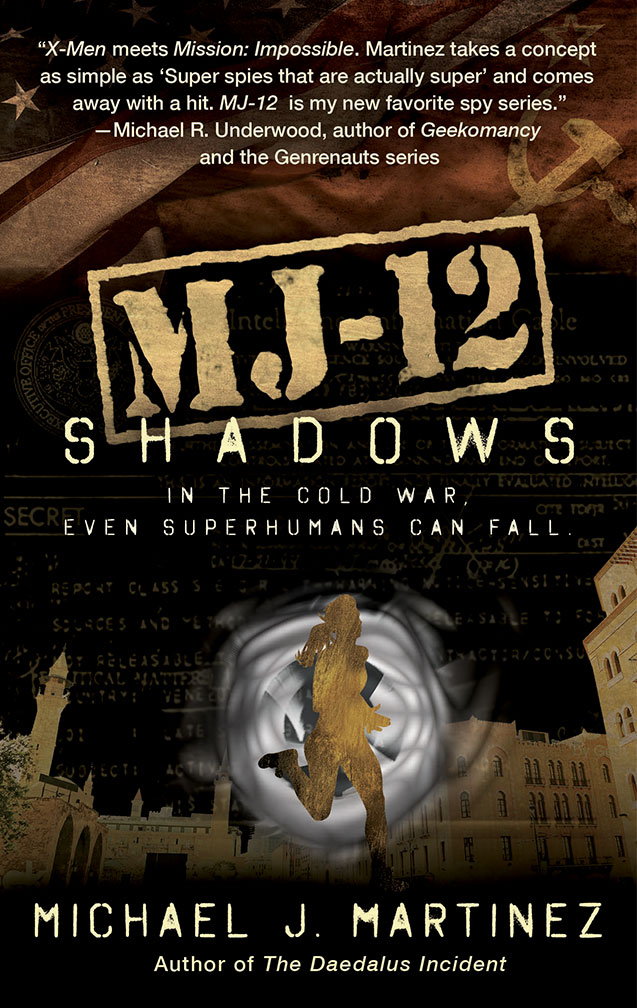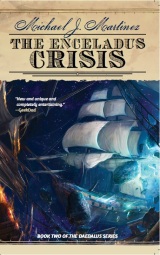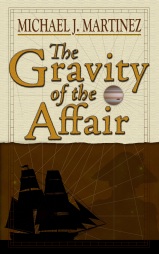 I’m quite pleased to bring you a guest post from Tom Toner, author of the fantastic new space opera The Promise of the Child from Night Shade Books. I get requests to read and potentially blurb from time to time, and for the record, I do read everything when asked. I’ve turned down a few. Not so with Mr. Toner. Here’s what I thought of this book, as seen on the back cover:
I’m quite pleased to bring you a guest post from Tom Toner, author of the fantastic new space opera The Promise of the Child from Night Shade Books. I get requests to read and potentially blurb from time to time, and for the record, I do read everything when asked. I’ve turned down a few. Not so with Mr. Toner. Here’s what I thought of this book, as seen on the back cover:
“Bold and intense from start to finish, The Promise of the Child is a master-class in innovative, evocative world-building. The entire book buzzes with imagination.” — Michael J. Martinez
Yes, it’s that good and then some. And I had the distinct pleasure of meeting up with Tom last night to toast the release. I couldn’t be happier for him — he’s a fine fellow indeed. Now, let’s hand it off to Tom to tell us what’s so gosh darn special about The Promise of the Child, in his own words.
—
Firstly big, big thanks to Michael, my fellow Night Shader (Nightshadow? Either way it’s impossible not to sound like a Harry Potter villain), for the opportunity. I’m pretty new to all this — and describing my ridiculous book succinctly is never something I’ve been very good at — but I love it very dearly, and I hope some readers out there will too.
There’s a great scene in The Hobbit (that sadly never made it into the movie) where Bilbo and the Dwarves are making their way through the pitch darkness of Mirkwood, tired and hungry and going slowly insane, when one of them spots the light of a distant fire:
“They all looked, and a longish way off, it seemed, they saw a red twinkle in the dark… after a good deal of creeping and crawling they peered around the trunks and looked into a clearing where some trees had been felled and the ground leveled. There were many people there, elvish-looking folk, all dressed in green and brown and sitting on sawn rings of the felled trees in a great circle…
No sooner had the first stepped into the clearing then all the lights went out as if by magic. Somebody kicked the fire and it went up in a rocket of glittering sparks and vanished. They were lost in a completely lightless dark…”
Again the fire springs up somewhere else in the distance, only to be kicked out when they reach it, plunging them all into darkness. The Hobbit was one of the first books I read by myself as a kid, and to this day that chapter in Mirkwood is one of the eeriest, most haunting scenes I’ve ever found. I can’t quite describe the blend of sensations it triggers (and I call myself an author); the blindness, the danger, the intimate band of moth-eaten dwarves and their spent tinder boxes, the deep, dark mountains surrounded by black forests running with silvery, enchanted streams.
Later in life I encountered a similar feeling reading H. G. Wells, particularly The Island of Dr. Moreau and The Time Machine, as well as some of the early works of Iain M. Banks like Consider Phlebas. Squirreled into the writing there was always a chord of unease that resonated with me, enchanting in its subtlety given that none of the books mentioned could ever be classified as outright horror, and all I knew when I began working on my first novel, The Promise of the Child, was how the book should feel: a similar amalgam of sensation — unnerving and ghostly, rich in tone and colour and sultry with ambience, dangerous but also somehow cosy, and above all deeply, deeply strange. It’s a sensation I never want the series to lose as it continues ever deeper into the horrific worlds of the 147th century, growing into such a vast hybrid of space opera and epic fantasy that my spell check gives up and starts slapping wanton red lines under every last word.
Set mostly in the 147th century, the novel actually opens in Prague in 1319, during a famine caused by four summers of unceasing rain. The Medieval prologue doesn’t last long; a chapter later I meanly throw the reader straight in at the deep end without any time to acclimatize, awakening them twelve and a half thousand years later on a hot pebbled beach looking out at a green sea. A tall, lovesick young man with crimson skin stares off into the distance as he wades, nervous of sharks and other, less tangible things.
The Promise of the Child is essentially, in the spirit of Tolkien, a novel about the theft of something very valuable, whilst simultaneously following the story of our shy protagonist Lycaste as he sets off across the Old World, all projected against a grand and colourfully eccentric backdrop; houses grown from living stone, foldable paper cities, singing sea monsters, hideous giants, men that live for tens of thousands of years inside hollowed planets, metal ores that grow on trees and a villain with a twist even I didn’t see coming at first.
My vision of the world in 14,647 AD began with nothing but sensation: heat, scent, drifting birdsong in thick, warm air, perhaps oddly interspersed with language. Colour and the arrangement of strict palettes became important, not just for aesthetics but also because it takes center stage in the protagonist’s mind. I also knew that I wanted to subvert as many cliches as I could, perhaps because (as might be the case with a lot of first-time authors) it was my story, and I’d had enough of seeing the same things repeated time and time again. My few solid rules in the building of the world were that it must always stay plausible — that however absurd things became they should always remain believably absurd — and that every set piece should pull no punches, heart-pumpingly and stomach-turningly standing out at each turn.
With that I set off, meeting new and grotesque characters at every bend in the road and populating the chaotic worlds around the nearest stars with the goblin remnants of mankind. I only hope it’s as special for others as it was for me, recreating that age-old feeling that I still can’t fully describe.
—
Thanks, Tom! As I mentioned, The Promise of the Child was released yesterday, and is of course available wherever fine books or ebooks are sold: Amazon, Barnes & Noble, Books-A-Million, Kobo, iTunes, Google Play and of course from my favorite genre indies, Borderlands Books and Mysterious Galaxy. Support your indies and locals!
And in terms of me liking this book, I’m not alone:
“Humming with energy, this is space opera like you’ve never seen it before. Absolutely brilliant.” — Adam Roberts
“One of the most ambitious and epic-scale pieces of worldbuilding I’ve read. Reading The Promise of the Child, you feel you’re in the presence of an author at the height of his powers. If this is what Toner is like when he’s just getting started, I think we can expect great things from him. Utterly absorbing; a tremendous adventure.” — Karl Schroeder
“A gorgeously-written, wildly imaginative book. It’s like no space opera I’ve ever read–compelling and addictive.” — Wil McIntosh
“An amazing debut—a colourful space opera in the post-human tradition of Iain M. Banks, combined with the razor-sharp plotting of Alastair Reynolds. It left me feverish with delight.” — Loren Rhoads
“An amazing debut. Intriguing, disorientating. Like Hannu Rajaniemi’s The Quantum Thief or Moorcock’s Dancers At The End Of Time, it’s told with the heightened vibrancy of a fable, and the melancholic sense of age and decadence so prevalent in Vance’s Emphyrio.” — Gareth Powell
Get it? It’s really good. Go forth and see for yourself.
#SFWApro











a chapter later I meanly throw the reader straight in at the deep end without any time to acclimatize
–And how. Right into the deep end 🙂
Pingback: Strange Horizons - The Promise of The Child by Tom Toner